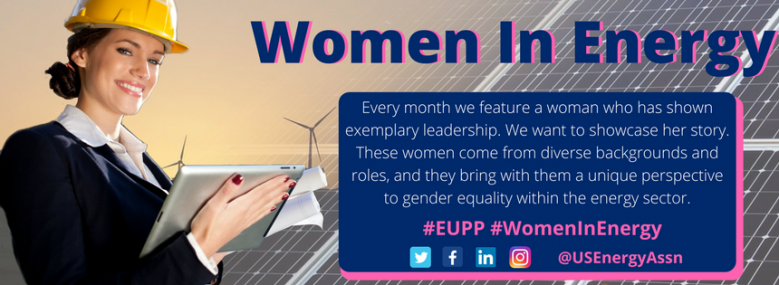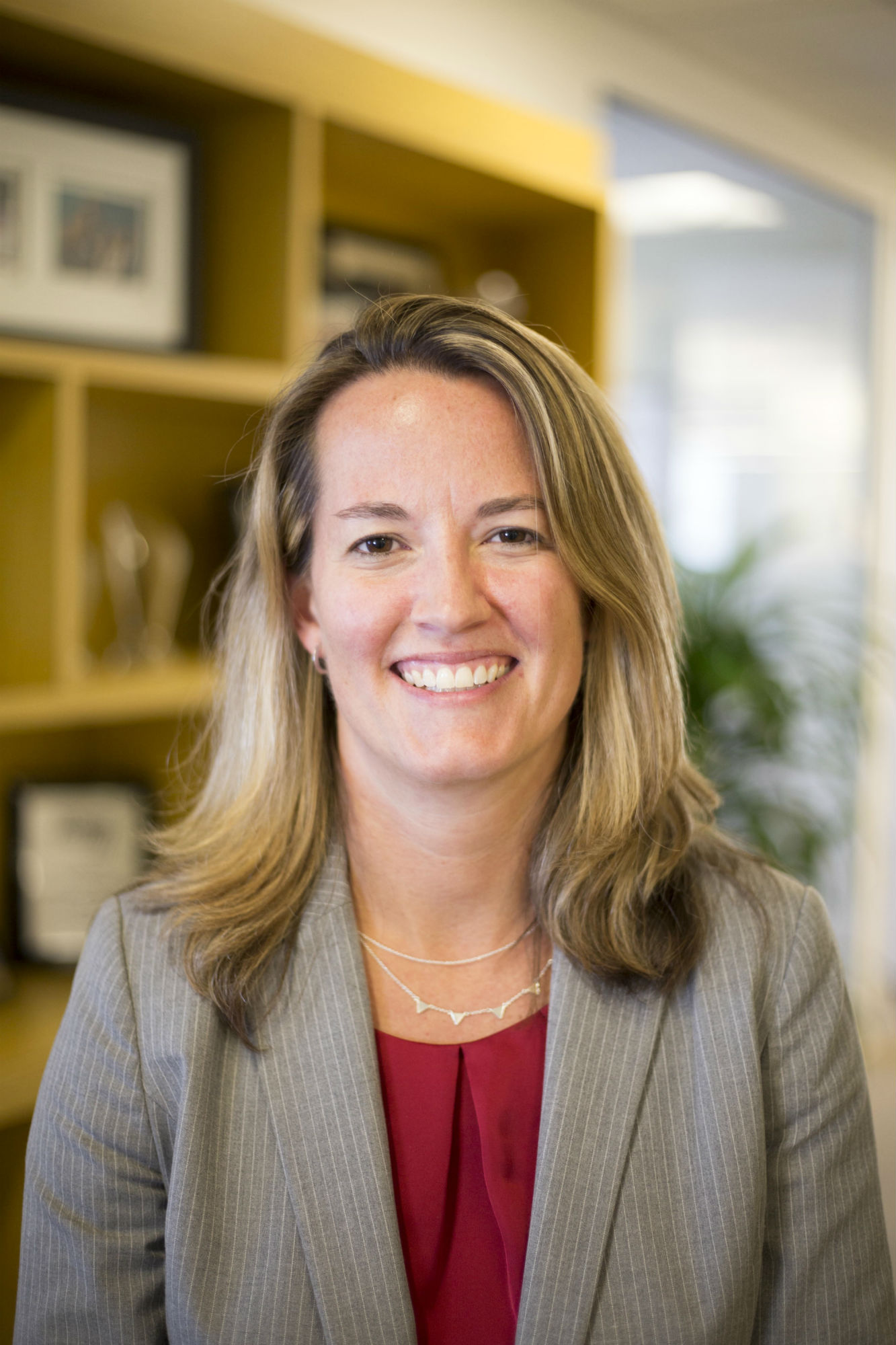
Women In Energy: Julia Hamm
The Women in Energy series is a joint project between USEA and USAID that was developed out of USEA’s Engendering Utilities Partnership, a program funded by USAID to improve gender policies and gender outcomes at their respective organizations.

Every month we feature a woman who has shown exemplary leadership and showcase her story. The women among you come from diverse backgrounds and roles and bring a unique perspective to gender equality within the energy sector.
Julia is a visionary non-profit leader at the center of the transformation underway in the electric power sector to a clean and modern energy future. For the past 20 years she has been advising and collaborating with utilities, solution providers and government agencies on business models, grid modernization, and clean energy policies, strategies and programs.
Julia guides and oversees all of SEPA’s research, education, and collaboration activities for its 1,100 member companies. She has led the organization through significant expansion in recent years, including rebranding from the Solar Electric Power Association to the Smart Electric Power Alliance, and merging with both the Association for Demand Response and Smart Grid (ADS) and Smart Grid Interoperability Panel (SGIP).
Prior to joining SEPA, Julia worked for ICF International where she supported EPA’s implementation of the ENERGY STAR program. Julia – a graduate of Cornell University – walks the talk, living in a PV powered energy efficient home in Northern Virginia.
*Neither USEA nor USAID alters the substance of the responses from the women featured. The answers are their own.
Women in Energy Interview Questions
1. How have your education and career path led you to where you are now?
"I entered college as a Natural Resources major, but quickly realized after just one semester that I wasn’t cut out to be a science major (Bio 101 for science majors, I learned, is much harder than Bio 101 for non-science majors!). I made the switch to Business Management & Marketing, which immediately felt like a much more natural fit for me. So perhaps you might think it’s not surprising that I ended up using my business and marketing skills to help the energy industry with the clean energy transition, which is so closely aligned with my original Natural Resources major. In reality, however, I landed in the energy industry by accident, answering an ad in the Washington Post for an entry level marketing position without knowing until I arrived at the interview that the focus would be working on energy issues.
That ad was placed by the consulting company that was managing SEPA back in 1999. So my career with SEPA actually began 20 years ago. In the early 2000s I left for 20 months to go to ICF where I helped manufacturers of energy efficient products use the ENERGY STAR label for marketing purposes. Then in late 2003 the SEPA Board of Directors came to me and asked me to return to run the organization.
Little did I know then the success I would have in growing a tiny one-person non-profit with 100 utility members into a 50-person organization with over 1,200 members including 725 utilities."
2. Over the course of your career, have you witnessed changes in the sector that have launched more women into leadership positions?
"There is no doubt that there are far more women in leadership positions today than when I started my career. In fact, I remember the first time I hosted a CEO dinner at the EEI Annual Convention in 2007. There were 30 CEOs in the room, and I was the only woman. Today, there are so many fantastic female CEOs and executives across the utility industry and the power sector more broadly.
When my career started, increasing the diversity of the workforce did not seem to be a priority, but that has changed. Most companies have diversity goals and programs. Leaders are evaluated based on how well they are able to diversify their teams.
Today there are also many great forums for women to network with each other and to learn how to advance their careers. There are non-profits dedicated to this mission. And just about every energy industry conference has a part of the program dedicated to discussing diversity and to helping advance the careers of females."
3. Technology is transforming the traditional utility business model into a more modern interactive grid. Some utilities view this transformation as an opportunity to focus on change management and diversity. Research provides compelling evidence that inclusion and diversity unlock innovation and drives better business performance. What, if anything, is your organization doing to attract, retain, and promote more women into senior management positions to respond to the dramatic industry transformation?
"SEPA’s mission is focused on the transformation underway and making sure it is a smart, thoughtful one. We are fortunate. We don’t have a problem attracting, retaining and promoting women into management positions. I think that is because of our culture and the values we live by. At our core we are about facilitating collaboration within the industry, which means we are highly collaborative internally as well. Women seem to be attracted by and to excel in collaborative environments. We also live and breathe “balance” as one of our corporate values. From a non-profit standpoint that means we look at every issue from multiple perspectives and weigh all considerations. From a staff standpoint, it means we take work/life balance very seriously."
4. Are talented women within your organization making it to top leadership positions? Why/why not?
"Absolutely. Of our nine top positions within the organization, five are filled by women. The reason is that they are the individuals with the right skill sets and expertise to deliver on SEPA’s mission and objectives."
5. Companies that embrace diversity outperform their competitors. What type of diversity programs does your organization have in place to mentor future women leaders? How does your organization measure and report gender diversity? Is the data publicly available?
"SEPA is still a relatively small organization with 50 employees, so we don’t have a formal diversity program. However, each employee has a meaningful allotment of funds for professional development each year which allows all employees, whether female or male, to enhance the knowledge and skills that will allow them to propel their career forward.
Our gender diversity split is almost exactly 50/50 so it seems as though we are doing well! While we are not an organization that is focused on a singular technology, we do participate and report our data annually in the Solar Industry Diversity Study."
6. What actions should the energy and electricity sector be focused on to accelerate change, increase diversity, and foster a better gender balance in the boardroom?
"I believe it’s all about intentionality. Set diversity targets and then actively seek out qualified female candidates. Ultimately any business needs to select the right person for the job regardless of gender, but don’t be satisfied if you are making your selection from a pool of all-male candidates without having made a serious effort to find equally qualified female candidates to consider."

